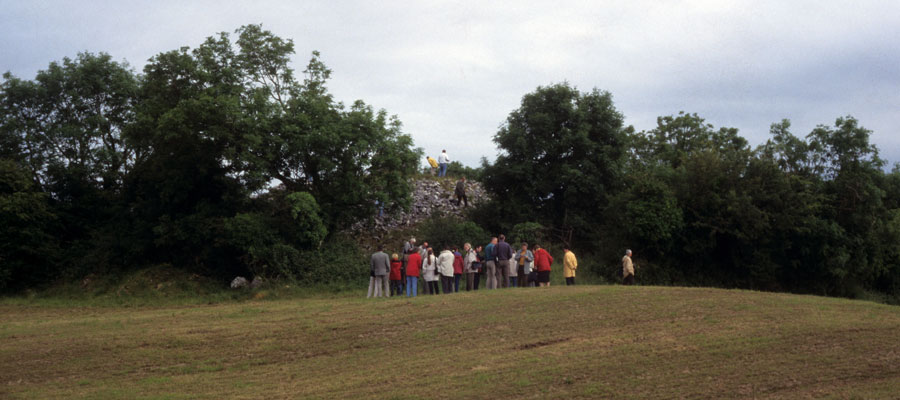Ballymacgibbon Cairn
Ballymacgibbon Cairn is huge, unopened and reletavely undisturbed cairn, quite likely to contain a hidden chamber. The limestone cairn is 51 meters in diameter and 10 meters high. It is surrounded by a low mound, or prehaps it would be more accurate to say that it is sitting on a platform like the large cairns in Sligo.
Kerbstones are visible in several places around the base of the cairn; one kerbstone bears some interesting lines or scratches. There is a large pile of stones on top of the cairn, a kind of pinnacle which would appear to be an Ordinance Survey pinnacle or trig marker.
The boundary of the cairn is wild and overgrown with bushes and shrubs. There are the remains of a lime kiln, a stone structure for burning limestone to make whitewash and lime cement, attached to the north side of the monument.
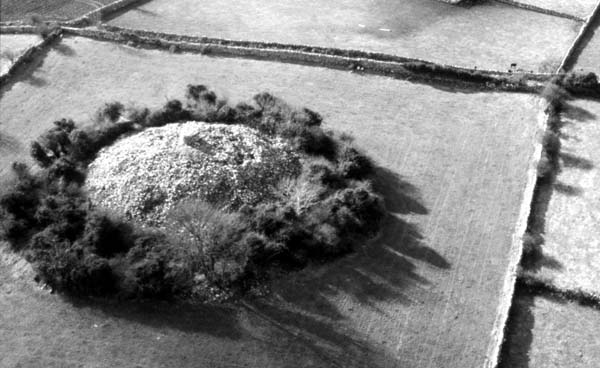
This monument is signposted on the right-hand side of the road as you travel from Cross to Cong. Access is very easy, a short walk up along a track, then in across a stile. Knockma and Eochy's Cairn are visible, as they are all quite close by. There are three more cairns, all pretty ruined, within a kilometer of Ballymacgibbon. The Nymphsfield stone circles are about 1.5 kilometers west of the cairn.
There is a large cashel ( a medieval stone fort ) in the field just south of the cairn, which is also worth a visit. It may be built over some kind of neolithic structure such as a henge, and date to the same era as Ballymacgibbon cairn.
Eochy's Cairn
This large monument, a somewhat quarried round limestone cairn is located on a low hill about 55 meters above sea level, some four kilometers north of the Nymphsfield stone circles.
The cairn is 45 meters in diameter, with sloping sides and a flat platform top, similar in shape to many of the Sligo cairns. A sizeable quantity of stones were taken from the east side, presumably for building the many stone walls in the nearby fields.
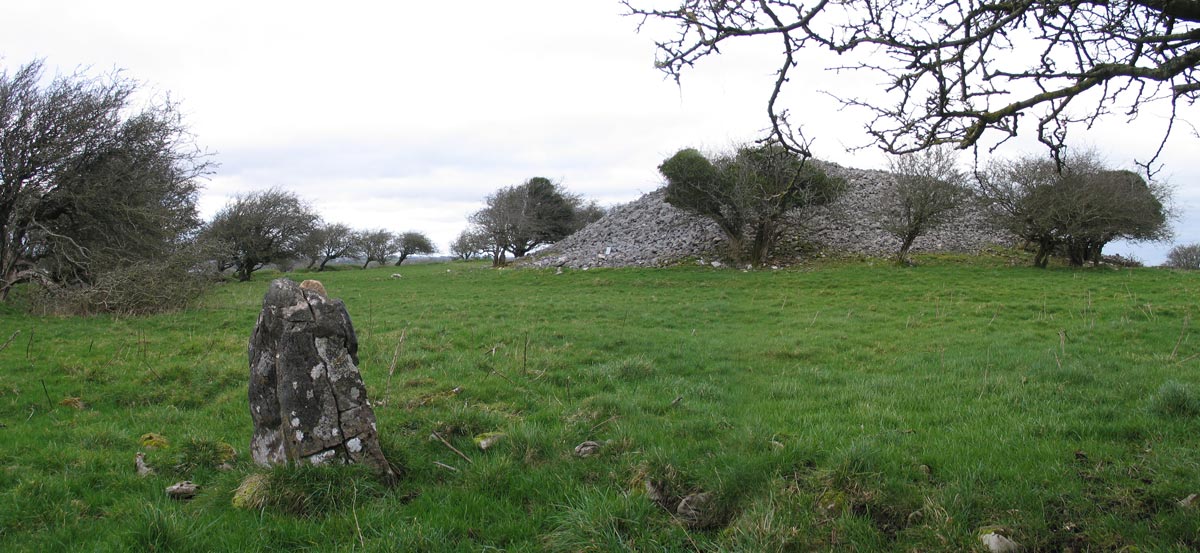
There is a fine view from the top, especially to the Connemara and south Mayo Mountains. The tip of Croagh Patrick peeps up over the Partry Mountains, rather like a cairn on a flat hill. Knockma with it's similar sized cairn is 22 kilometers to the south east. The Burren may be visible to the south, but it was too hazy to tell when I was there.
A most interesting feature found at this monument is the huge oval enclosure 145 meters in diameter north to south, more intact on the west than the east side. It encircles the cairn with it's long axis running north-south, and probably looks like an eye from the air. There are a few small standing stones set against the inside of the enclosure. The nearby monument, Dathi's Cairn, is also within an enclosure, circular in shape.
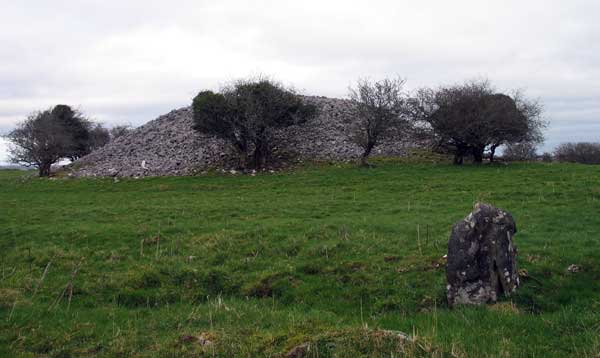
Eochy's Cairn is said to be the grave of the king of the Firbolg, who was ambushed and killed by three of the Túatha Dé Danann while he was going to Lough Mask for a drink of water. There was another monument called Eochy's Grave ( also known as Cuchullain's Tomb), now submerged beneath the sea in Ballisodare Bay under Knocknarea in County Sligo.
Daithi's Cairn
Daithi's Cairn is located not far from the road just one kilometer southwest of the town of Ballinrobe. Large quantities of stone has been quarried to build the many local field walls. The cairn was a circular cone some 60 meters in diameter, but more than half the material is missing. There are twenty-one kerbstones remaining, but no sign of a chamber having been exposed by the quarrying.
Similar sized monuments are found at Heapstown Cairn and Queen Maeve's Cairn, both in County Sligo, and Cairn D at Loughcew in County Meath.
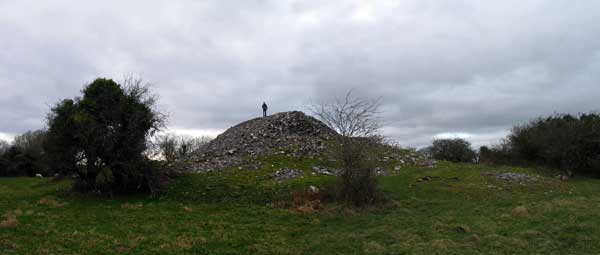
Another interesting feature of Daithi's Cairn is the enclosing circular wall, which runs right around the monument about 20 meters out from the kerb. Much of this stone wall and ditch is certainly fairly recent, but could easily be built over an earlier, much older embankment. There are twenty-one kerbstones remaining around the circumference of the monument. It is surprising that the chamber was not discovered when so much of the cairn was removed.
The view is wide in all directions for such a low-lying monument. A glimpse of Lough Mask is visible from the top of the monument. Both the Hill of Knockma, 24 kilometers to the south east and Eochy's Cairn which is about 2.5 kilometers to the south are visible. The tip of Croagh Patrick appears, like a distant monument, peeping over the Partry Mountains, and probably marks a sunset in May and August. There is a pond or spring in a field beside the cairn, visible as a low horseshoe-shaped mound.

